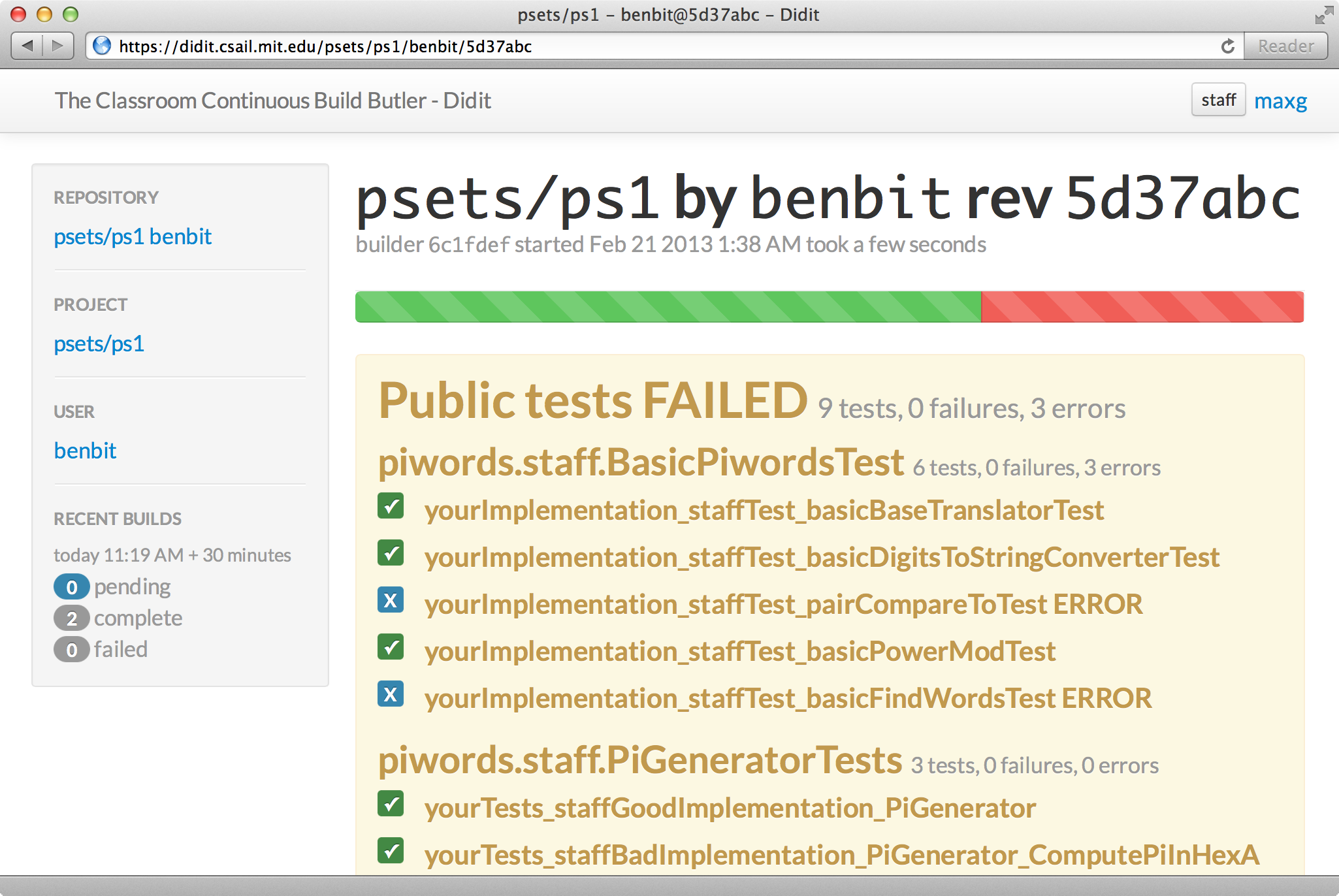Introduction
Didit is a continuous build system for the classroom.
-
Didit is integrated with student Git repositories. When students push new commits to their repository, Didit attempts to build and test their work.
-
Didit can provide students with quick and easily-accessible feedback on whether their work compiles and passes a suite of public tests.
-
Didit can run a suite of hidden tests, compute grades based on the results of those tests, and serve grade reports to students.
-
Didit allows staff to record student revisions at multiple deadline times and release grades using different deadlines for different students, to handle slack days or extensions.
Moving parts
Staff Git repository: Didit assumes that a staff repository stores building and grading material for each assignment. The staff repository must be organized with a required directory structure.
Student Git repositories: Each student has a student repository for each assignment. Student repositories must be organized in a required directory structure.
Shared filesystem: Didit requires a shared filesystem for accessing student and staff repositories and for storing build results.
Assignments: an assignment has a two-part name so assignments of the same kind can be grouped together: psets/ps0, projects/abcplayer, etc.
Build: a build is an attempt to compile and run tests against a student submission for a particular assignment using a particular staff revision. See builds, and build configuration, and build security.
Staff revision, builder revision: when it builds an assignment, Didit computes the latest revision of the staff repo that modified material for that assignment; this revision is the staff revision for the build.
Public and hidden tests: in addition to compilation results, public test results are visible to students, including stack traces and console output. Hidden test results are only visible to staff.
Sweep: Sweeping an assignment causes Didit to (1) record the current revision for every student repo and (2) ensure that all of those revisions have been built with the current builder revision. See sweeps.
Milestone: A milestone collects grades, assigned individually by revision or in bulk from a sweep, and allows grade reports to be released to students. Milestones are named, e.g. “beta” and “final.”
Grade report: A grade report shows the results of all tests specified in the grading configuartion for an assignment. Grade reports are visible to students when released under a milestone. See grade assignment.
Amazon Simple Workflow Service: Didit uses the AWS Simple Workflow Service to queue and coordinate builds.
Web font-end: The web front-end serves web pages, handles build requests, and manages the build workflow by sending tasks to SWF.
Workers: Workers receive SWF tasks and perform builds: compiling, testing, and grading.
